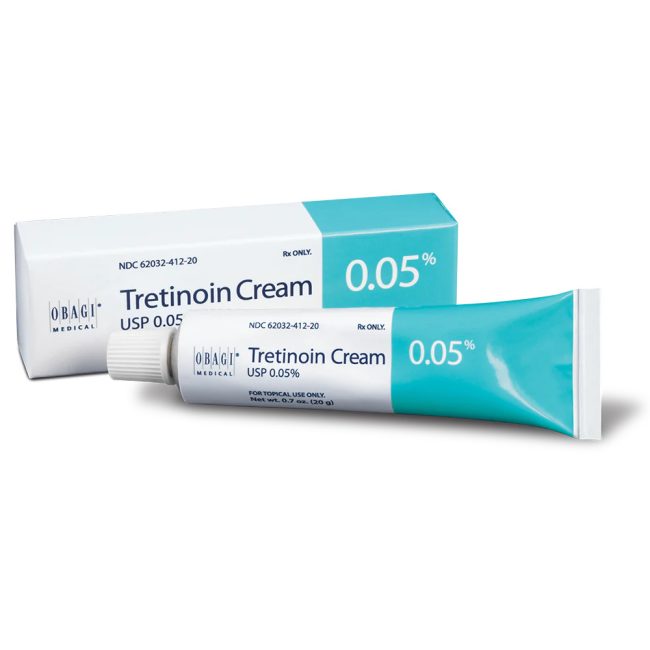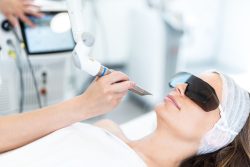Retinoids are a family of Vitamin A and its derivatives that can treat acne, reduce fine lines and wrinkles and correct hyperpigmentation. They work by increasing cell turnover, boosting collagen and unblocking pores to prevent the formation of blackheads or spots.
The most commonly used retinoid is tretinoin (Retin-A). It is a form of Vitamin A that can be derived from retinaldehyde and all-trans retinoic acid.
What is Tretinoin?
Tretinoin is a strong form of vitamin A, and it’s only available with a prescription. It works by speeding up your skin’s cell turnover cycle, helping to fade fine lines and treat sun damage. It also helps to boost collagen production and reduce the appearance of pores.
It’s considered the most powerful form of retinoid and is often prescribed to treat acne and signs of ageing. However, it’s not suitable for everyone. “A good candidate for tretinoin is someone who has tried other over-the-counter retinol products, but still struggles with breakouts, and is looking to improve their skin texture, pigmentation and uneven skin tone,” says dermatologist Dr Adil Sheraz.
During treatment, you must use sunscreen with an SPF of 30 or higher every day. You should avoid smoking or drinking alcohol, and tell your doctor or pharmacist about any other medications (including over-the-counter and herbal supplements) you are taking. They may interact with tretinoin.
How does Tretinoin work?
Tretinoin works by changing the way skin cells grow and behave. It speeds up the exfoliation process which helps to unblock pores, and it encourages collagen and elastin production for firmer skin. It also inhibits transglutaminase activity in the epidermis and prevents follicular plugging that leads to oiliness and P. acnes infection.
When used properly, it can be an extremely effective treatment for anyone with acne and blemishes. But, says Dr Sheraz, it is important to remember that retinoids can make skin feel dry and flaky so you must use a hydrating moisturiser with calming ingredients like shea butter and panthenol.
She recommends making an appointment with a dermatologist or doctor for a personalised prescription. They will tell you how to apply the medication and when you can increase the frequency and concentration of your treatments.
They will also check that you are using a broad spectrum sunscreen in the daytime as retinoids make your skin more sensitive to sunlight. They will also ask you about any other medications or supplements that you are taking and whether they interact with tretinoin.
What are the side effects of Tretinoin?
A lot of people have heard about the skin purging that can occur when first starting retinol or tretinoin. You can find it all over the internet on message boards, videos and blogs – but it’s essentially a period of red, inflamed and flaking dry skin. Dermatologist and founder of Dr Nyla Skincare, Dr Nyla Raja says this is a normal reaction to the active ingredient and can take a few months before your skin gets better.
Pregnant women are advised not to take tretinoin as it can cause serious harm to unborn babies. It is also not known whether this medication can pass into breast milk so should not be taken by breastfeeding mothers.
If you are a woman, your doctor will perform blood or urine tests before starting this medication and then at regular intervals during treatment. You must use two acceptable forms of birth control and continue using them for 1 month after your tretinoin therapy is finished, even if you are infertile or have undergone menopause or had your uterus removed (hysterectomy). This is very important to prevent pregnancy.
How do I use Tretinoin?
The best way to use tretinoin is in conjunction with a comprehensive skin care regimen. Start by using a gentle cleanser and gently removing makeup (especially eye makeup). Avoid over-washing or excessive scrubbing.
Once your face is clean, moisturize. It’s important to use a moisturizer that doesn’t contain benzoyl peroxide, vitamin C or glycolic acid as they can cause dryness. Instead, try a cream with shea butter or cocoa butter.
It’s also important to use sunscreen while on tretinoin. It makes your skin sensitivity to sunlight much higher so it’s important to protect your skin.
Finally, it’s important to start with a low strength and slowly increase the frequency of use as your skin gets used to it. It can take a few weeks or months to see results so be patient. A patient of mine started using tretinoin in her mid-twenties and now says she looks better now than she did when she was 27! retin a uk

